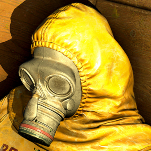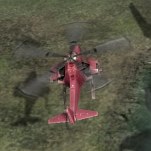Brink
(Multi-Platform)

I remember the joy of first playing Team Fortress Classic. It was some time back in middle school, and the Half-Life spinoff introduced me to the world of class-based shooters. As I grew older, my interest in these sprawling multiplayers waned, and I looked back fondly on countless highschool nights of Halo 2 wondering what the allure had even been. I still found the games enjoyable, and could play for hours or days, but soon my attention wandered elsewhere.
What was it about the games of the past that held me captivated for so long? Perhaps it was simply the naivety of my youth, but maybe it was something more. Maybe it was the challenge of collaboration, the thrill of accomplishment and the glory of success. I realized how little fun it is to repeatedly smash heads with opponents in traditional team-deathmatch style combat, and how awesome it is to work together as a team to accomplish an objective task. Then I remembered how rare it is for your teammates to feel the same way. Enter Brink.
Brink is an objective-centered squad-based first-person-shooter with a parkour-inspired movement system. I know, its a mouthful. What it is not, on the other hand, is a singleplayer game. If you are looking for a compelling, cohesive, even remotely interesting storyline, Brink is not for you.
From the outset, I was given hardly any introduction to who I was and what I was doing, rather, I found myself staring down a series of menus suggesting I create a character and get shooting. After trundling past the initials of building a character and picking weapons, I managed to make my way to the campaign.

It should be noted that “campaign” is meant in the loosest sense of the word, as the “single-player” is merely a series of multiplayer maps with a vague story surrounding them, demonstrated by a single audio log and cutscene before each mission. Further adding to the confusion, I am often thrown into a mission that is partially complete, thus further distancing my experience from the story at hand. Immersion? Hardly.
By the end of the Resistance campaign, I had a vague notion that we were trying to escape the Ark (the ocean-locked floating city where Brink’s conflict takes place) by way of freeing a pilot and stealing an airship. The Security forces did the opposite; working to stop the Resistance at each step along the way. This means that missions play out as either assault or defend, with offense having two to three primary objectives and about eight to 12 minutes to complete each one. This formula is fine enough, but with a grand total of eight maps, each recycled for play from either side, games get old pretty quick. I started feeling bored seeing a map again once after my team failed an objective; I can hardly imagine going back in voluntarily.
The good news for Brink is that while the maps and gametypes quickly grow stagnant, the combat does not. At its core, Brink is a tight, class-based shooter with excellent supplementary techniques and a unique movement system. While the parkour-based SMART movement system feels slightly—not useless, but not overly useful—at first, it is a skill-based addition that will allow some players to set themselves apart. Similarly, weapon control is solid, if lacking in variety. Upgrades allow me to customize weapons slightly, but overall the game’s 20-some weapons felt like multiples of a single four types. Luckily, DLC patches are on the way (the first one is free), and they will introduce new abilities, outfits, weapons and maps.
- Here in the Wheel World, Cycling Is a Sweet Dream that Always Comes True By Garrett Martin July 23, 2025 | 12:00pm
-

-

-

-

-

-

-

-

-

-

-

-

-

-

-

-

-

-

-

-

-

-

-

-

-

-

-

-

-

-

-

-

-

-

-

-

-

-

-








































